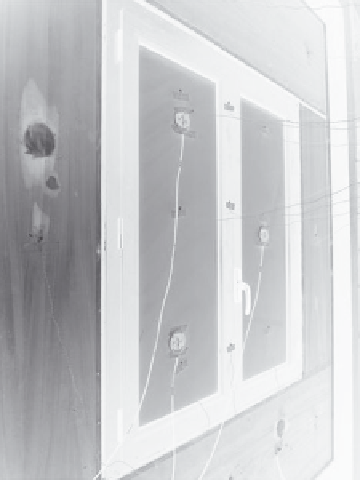Civil Engineering Reference
In-Depth Information
granule size: 3 mm) have a low attenuation (about 1 dB/cm), lower than
that of a conventional insulating material, such as glass wool; nevertheless,
in the small granules (mean granule size: about 80
m) the attenuation
values are in the 0-12 dB/cm range, depending on the frequency range:
above 500 Hz, the values are higher than the glass wool ones (about 3 dB/
cm). The effi ciency of granular silica aerogels as sound insulators in the
100-2500 Hz frequency range was also demonstrated when they are used
in multilayer (a fi st layer (1 cm) made of large granules and the second one
(3 cm) made of small granules): in the 300-1700 Hz range, the sound trans-
mitted through the aerogel is 15 dB lower than that transmitted through
glass wool with the same thickness.
Finally, the translucent insulating material in the interspace of glazing can
improve the sound insulation of the building envelope, in comparison with
systems with air, as shown in Buratti and Moretti (2012b). A prototype of
an aluminium frame window with granular aerogel glazing was produced
and tested: aerogel in granular form was put in a gap 15 mm in depth; indoor
and outdoor layers were fl oat glasses of 4 mm thickness (Fig. 10.13). Both
the thermal and acoustic performance in the building façades of the window
prototype were evaluated in terms of measured U-value (hot box method,
μ
(a)
(b)
10.13
Setting-up of the aerogel glazing system with nanogel
®
(a) and
window prototype during the laboratory test (b) (Buratti and Moretti,
2012a).


Search WWH ::

Custom Search